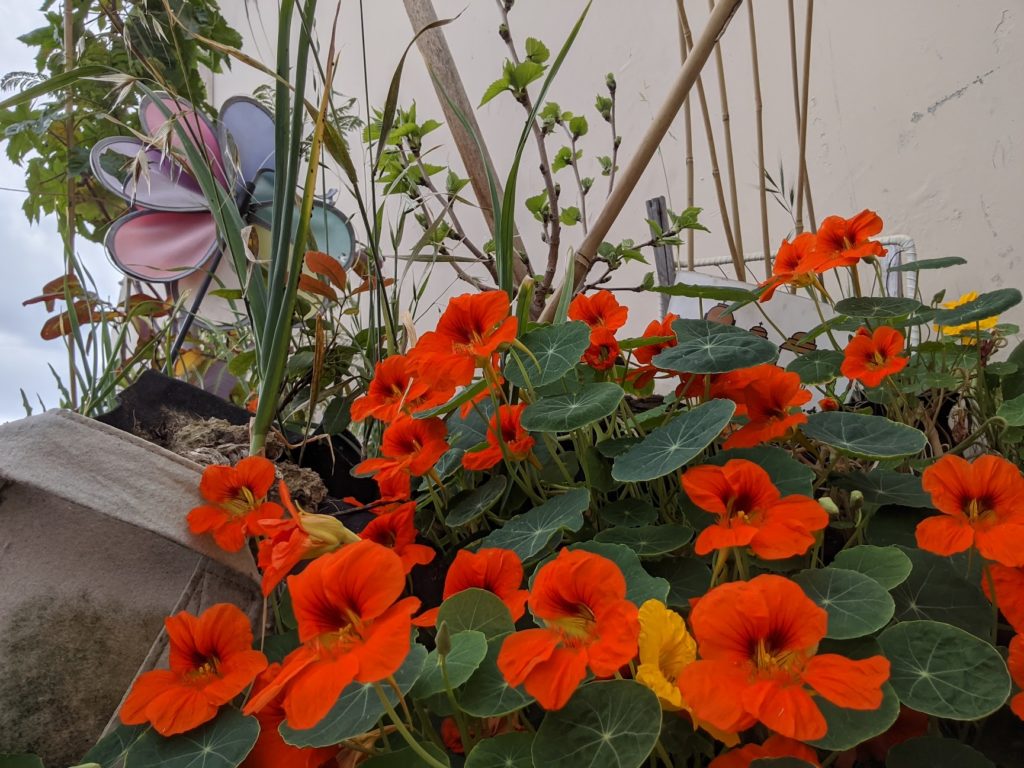Nasturtiums (Tropaeolum majus) are flowering annual plants that are native to South America. They are known for their bright, colorful flowers, which can be orange, yellow, red, or pink. Nasturtiums are also prized for their edible leaves and flowers, which have a spicy, mustard-like flavor.
Nasturtiums are easy to grow and are well-suited to a variety of gardening conditions. They prefer well-draining soil and full sun, but can tolerate partial shade. They are also drought-tolerant and can thrive in poor soil. Nasturtiums are often grown as a ground cover or in containers, and can also be grown vertically on a trellis or other support.
In addition to their decorative and culinary uses, nasturtiums are known for their medicinal properties. The leaves and flowers of nasturtiums have been used to treat respiratory and urinary tract infections, and are believed to have anti-inflammatory and diuretic properties. Nasturtiums are also sometimes used in natural insect control, as they are known to deter certain pests such as aphids.


Benefit of Growing Nasturtium
There are several benefits to growing nasturtiums in your garden or home:
- Bright, colorful flowers: Nasturtiums are known for their bright, colorful flowers, which can add a splash of color to any garden.
- Edible leaves and flowers: The leaves and flowers of nasturtiums are edible and have a spicy, mustard-like flavor. They can be used in salads, sandwiches, and other dishes.
- Easy to grow: Nasturtiums are easy to grow and are well-suited to a variety of gardening conditions. They are drought-tolerant and can thrive in poor soil.
- Medicinal properties: Nasturtiums have been used for medicinal purposes for centuries. The leaves and flowers are believed to have anti-inflammatory and diuretic properties and have been used to treat respiratory and urinary tract infections.
- Natural insect control: Nasturtiums are known to deter certain pests, such as aphids, and can be used in natural insect control in the garden.
- Decorative: Nasturtiums can be grown as a ground cover or in containers, and can also be grown vertically on a trellis or other support. They can add a decorative touch to any garden or home.

